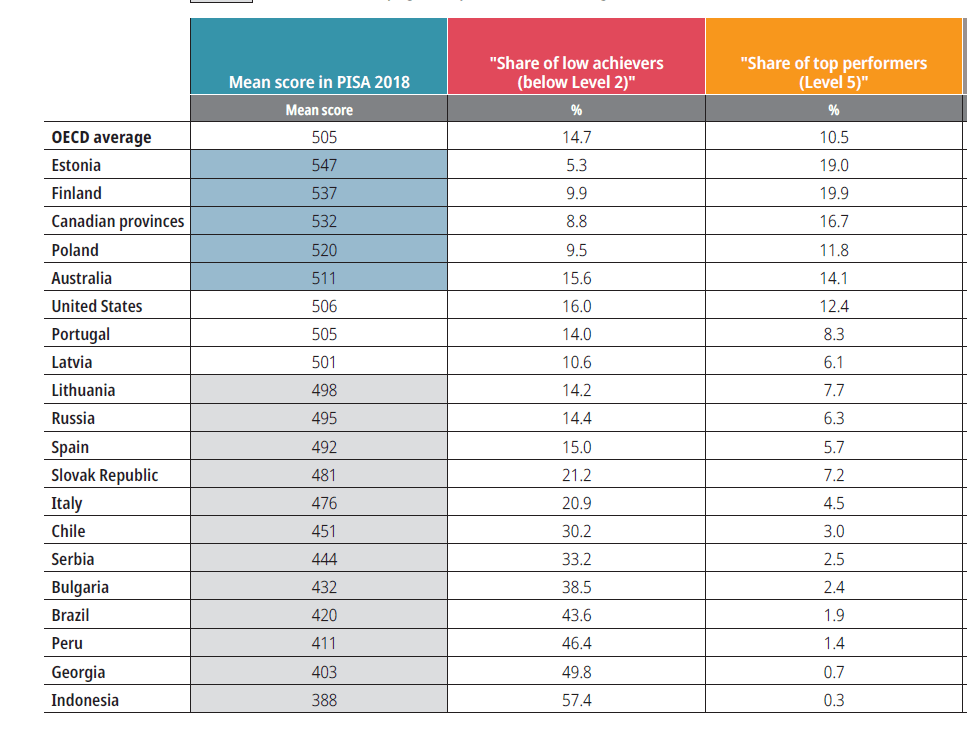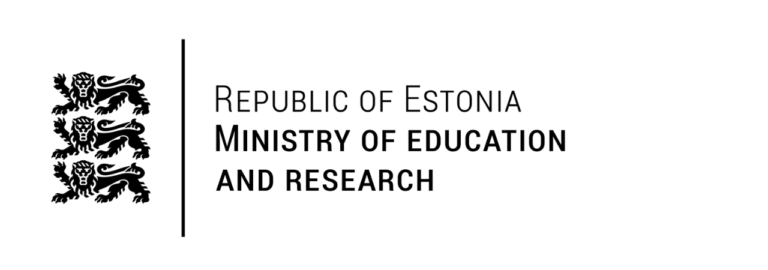Financial literacy is an essential life skill. The new release of data by OECD on knowledge, skills and attitudes towards financial topics of 15-year olds in 20 countries are of special interest in the current situation. Estonian students participated in the optional financial literacy assessment as part of PISA 2018 and showed the highest mean score of 547 points among all participating countries (OECD mean 505 points).
Estonian results were followed by students from Finland (537 points) and Canadian provinces (532 points). From the neighbouring countries also Latvia (501 points), Lithuania (498 points) and Russia (495 points) took part in financial literacy assessment.
Finance education
The survey examined how well young people know and understand financial questions and how they can apply their knowledge and skills in real-life situations. It also explored where young people get their financial knowledge from, how familiar they are with different financial terms, products, and if they are active users of financial services.
See also:
Entrepreneurship Education: Developing a sense of initiative and entrepreneurial mindsets
This was the second time Estonia participated in PISA financial literacy assessment. The first time was in PISA 2012, and the results from both surveys provide us with comparisons and trends. In 2012 Estonian students ranked third among 18 countries with a mean score of 529.
Between 2012 and 2018 Estonian student skills in financial literacy have increased by 18 points and Estonia is the only country where such a significant increase has been observed.
Besides the mean scores, PISA also measures students according to levels of proficiency, level 1 being the lowest and level 5 at the highest level. The higher the level, the more complex tasks students can solve. Between 2012 and 2018 there was a significant increase in the proportion of students who scored at level 5 (increase by 7 score points). There are 19% of students in Estonia who can solve the most complicated tasks of PISA financial literacy test (OECD mean 10,5).
Equity: in Estonia, all students can succeed
In PISA, lots of attention is paid to the equity factor of education. In most countries, students from disadvantaged family backgrounds perform worse than their peers who are more fortunate and come from wealthier families. If among OECD countries 10% of the variance is explained by socio-economic background, then in Estonia it is less, 6,1% which is the lowest number among participating countries. There is no significant gender difference, also urban and rural students perform similarly in the financial literacy test.
However, there is a difference in performance between schools with Estonian as the language of instruction and Russian medium schools. Both groups have improved between PISA 2012 and 2018, but the difference remains. Estonian medium schools scored 560 points while schools with the Russian language of instruction 514 points in 2018. The scores were 540 for Estonian medium schools and 498 for Russian language schools in 2012.
Snapshot of performance in financial literacy. Source: OECD


Where do Estonian students learn about money and finances?
Test results in financial literacy strongly correlate with scores in Mathematics and Reading literacy (0,87 and 0,83) in all countries. 68,3 % of Estonian students claim that they learn about financial topics in their Math lessons. Students who have learned about financial matters from Math lessons score the highest in the financial literacy test.
The main source of information about money matters come from the family. 95% of students claim that that is where they have learned about financial issues. The next most important source for information is the internet (83%), followed by teachers (51%).
Although family pays a crucial role in teaching about money matters, Estonian parents are not too keen to talk about this topic with their children. Around 40% of parents never discuss their family budget or financial news with their kids. They might take up the topic of savings and plans to make a bigger purchase. It is interesting that frequent discussions on money matters result in lower test scores in Estonia.
See the full version of the article here.





